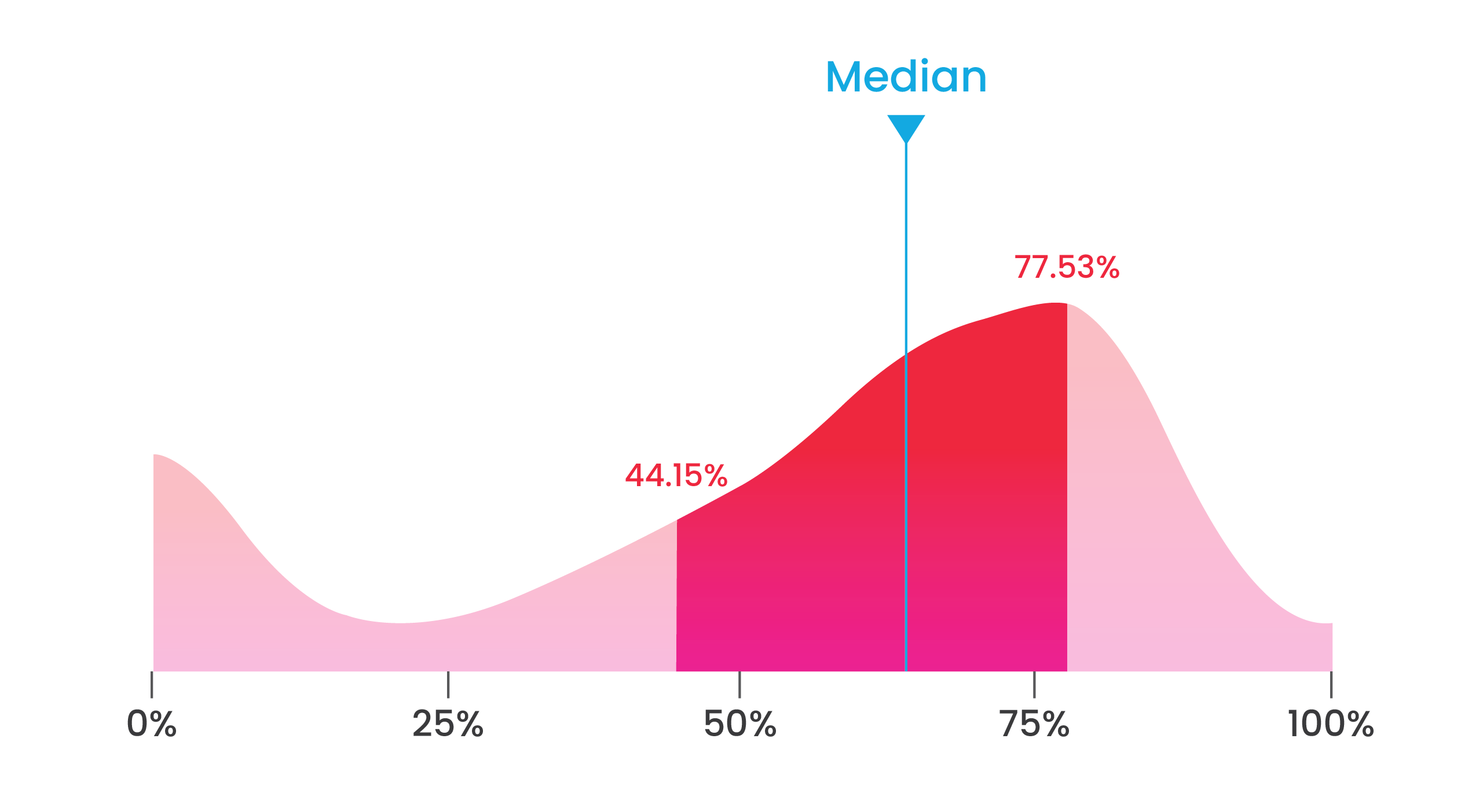In today's digital age – and with uncertainties and economic disruption ahead – having a strong website is an absolute must for any business looking to grow and attract new customers.
However, simply having a website is not enough. You also need to ensure your website is engaging, user friendly and provides the necessary information that your visitors are looking for.
One key metric to measure the effectiveness of your website is the bounce rate. In our Benchmark Group data, the average bounce rate for mid-sized UK-based B2B business websites is 63.86%. This sounds low to many of us – surely most businesses would be happy with this bounce rate?
But when it comes to measuring whether your bound rate is “good”, all may not be as it seems. In this blog post, we will explore:
- What bounce rate is
- Why bounce rate matters
- Why you need to dig into your bounce rate data to build an accurate picture of what’s really going on with your website.
What is a bounce rate?
Bounce rate is the percentage of visitors who leave your website after only viewing one page. In other words, they "bounce" from your website without interacting further.
We measure bounce rate by dividing the number of visitors who bounce by the total number of visitors to your website.
If the average bounce rate for mid-sized UK-based B2B business websites is 63.86%, that means that just over 63% of visitors only view one page – meaning that 37% of visitors view two or more webpages.

Therefore, almost two thirds of visitors leave the website after viewing only one page while one third explore further. While it is important to note that bounce rates can vary widely depending on the industry and website type, this benchmark provides a useful reference point for UK B2B businesses.
Why does a bounce rate matter?
Bounce rate is an important metric to track because it can indicate how well your website is engaging visitors and meeting their needs.
A high bounce rate can be a sign that:
- Visitors are not finding what they are looking for
- They are not finding a consistent journey (between the ad, social post or Google result they clicked on, and what they find when they land on your site)
- Visitors are not interested in exploring your website further.
On the other hand, a low bounce rate can indicate that your website is providing a good user experience and that visitors are finding what they need.
Is a high bounce rate always a bad thing?
So is your bounce rate higher than 63.86%? Chances are, it may well be. Although this is average, many businesses see a bounce rate higher than this (so don’t panic!). In order to judge whether your website bounce rate is too high and needs lowering, first you need to ask some questions:
1. Are all your pages receiving the same bounce rate?
People should be using your product page differently to your home page, for example. It’s unlikely people are ‘bouncing’ in the same way across your site so gather data on the pages with the highest bounce rates and look for patterns.
2. What types of pages have a high bounce rate?
If people are bouncing off your homepage at a high rate you might have cause for concern, but if they’re bouncing off a high-performing content page such as a blog post, this could be a perfectly good sign (they found the answer they were looking for and left)
3. Is there anything else for a user to do other than bounce?
If someone has landed on your website, is there an obvious next step for them to take, such as a key, relevant conversion point? If not then a user could have just done everything they set out to do, and now they can leave.
It’s important to pay attention to the specific pages visitors are landing on and bouncing away from. As Databox reveals:
‘No two bounces are created equal. The aggregate bounce rate of your entire website is a good starting point, but keep in mind that this number is a reflection of all the pages on your website.
Would you expect the bounce rate of individual blog posts to differ from the bounce rate of your pricing page?’
- Some pages, such as your pricing page, are high intent and likely driven by direct traffic and referral links.
- Whereas, blog post views might have lower intent and are driven more by organic traffic.
Treating both types of pages the same way is not advised.
In conclusion, bounce rate is a vital metric to track, and a high bounce rate could indicate that your website is not meeting your visitors' needs. Whatever your bounce rate, it’s worth tracking and analysing what the reason is for your number, and digging into where and why are people bouncing from your site.
Stay Updated with Our Latest Insights
Get expert HubSpot tips and integration strategies delivered to your inbox.




